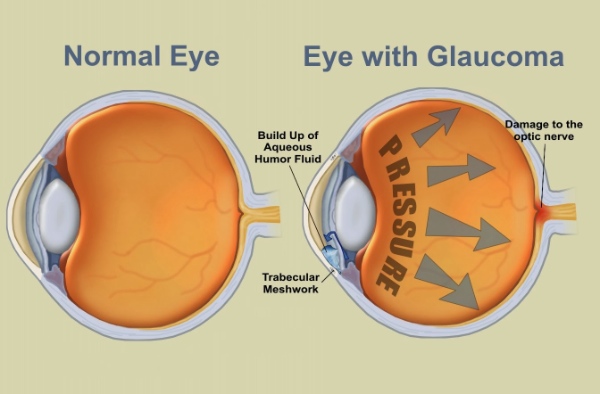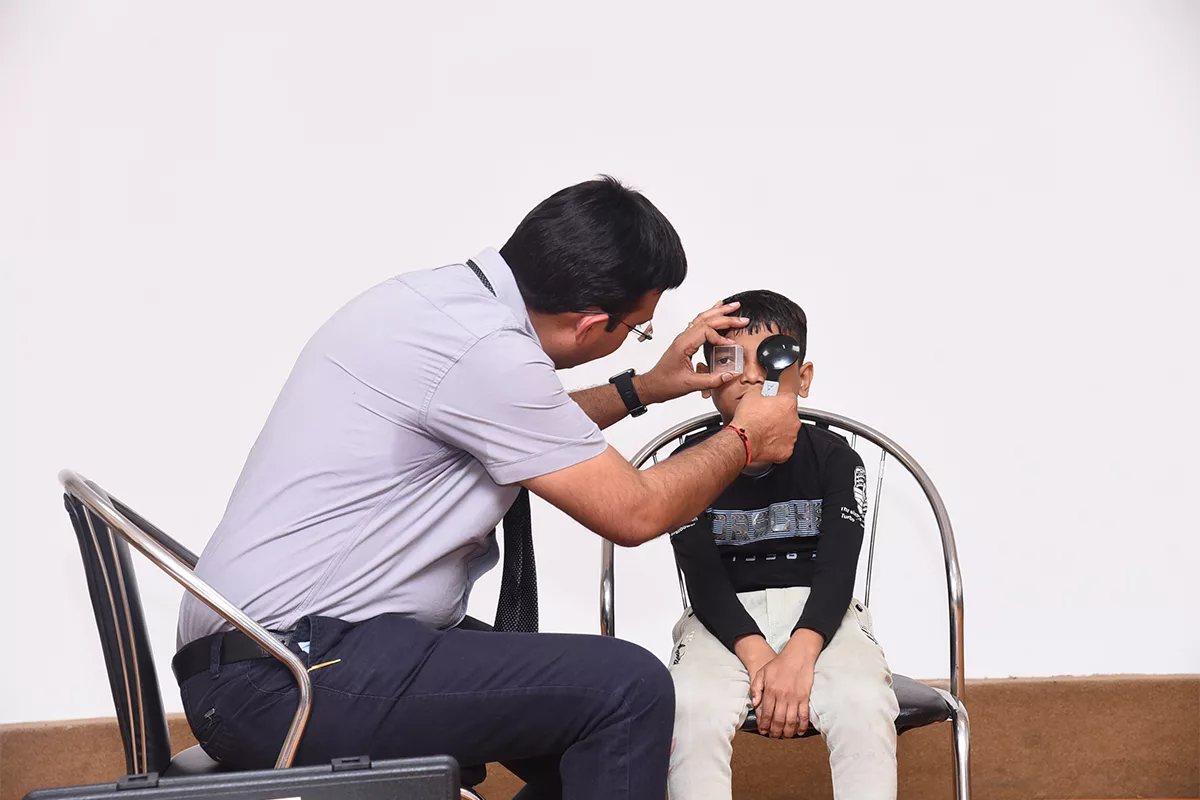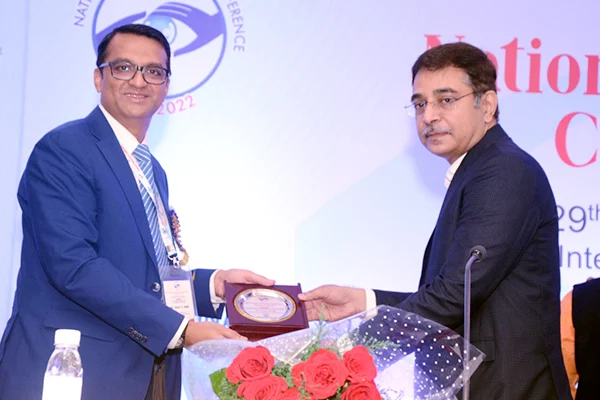Glaucoma is a progressive disease that can lead to blindness if undetected. A low-down on the disease, its symptoms, and the role optometrists can play in its treatment

While most of us are extremely particular about that part of the body that is visible to the world, it’s amazing how little care we take of other aspects of our health that are equally vital and that need just as much routine care. Vision is one aspect of our body that should be taken care of as routinely as, say, the skin.
Our only connect with ‘vision care’ is when there is conjunctivitis or difficulty in reading or watching TV. Unfortunately, other ailments that might be slowly and insidiously making their way into the eyes may be totally ignored till such time that it becomes too late. Like Glaucoma – an eye disease that might strike one after 40 and lead to blindness if unattended.
What Is Glaucoma?
Glaucoma is a condition that is characterised by the damage of the optic nerve. This damage is caused when the pressure in the eye is high. This happens when there is not enough easy movement of fluid in the anterior chamber of the eye. This fluid, called aqueous humor, flows into the eyes through a mesh-like channel. If this channel gets blocked, the flow of aqueous humor is hampered, thereby causing the pressure to rise.
Correct and timely diagnosis of the disease can arrest its progress and thereby stop further damage to the optic nerve. Important to remember here is that glaucoma is also hereditary. Alternatively, if the person is diabetic or has other eye-related issues, glaucoma can make an appearance and create havoc.
Different Kinds Of Glaucoma
There are several kinds of glaucoma, but the two most talked of are Open-angle Glaucoma and Narrow-angle or Angle-closure Glaucoma. There is a drainage angle inside the eye (the mesh) that controls the outflow of the watery fluid. If the fluid can access the drainage angle, it is called Open-angle Glaucoma. If the drainage angle is blocked and the fluid cannot reach the angle, it is called Narrow-angle Glaucoma.
Open-angle Glaucoma first affects the peripheral vision. There are not too many other symptoms. But by the time you realise this, the vision has been damaged considerably. Angle-closure Glaucoma is lesser known as it affects lesser number of people. Unlike Open-angle Glaucoma that takes a while to develop, Angle-closure Glaucoma develops rapidly, creates a more dramatic picture and demands immediate medical attention.
Symptoms Of Glaucoma
How do you know if you are heading towards glaucoma? What are the early warning symptoms? What should make you take an appointment with your eye doctor and what should just be ignored?

It is unfortunate that there are no obvious symptoms of Open-angle Glaucoma. The disease progresses over a period of time and extremely gradually. As the peripheral vision gets affected first, the direct vision remains clear and undisturbed for a long time. But symptoms of Angle-closure Glaucoma are pretty strong. Hazy or blurred vision; the appearance of rainbow-coloured circles around bright lights; severe eye and head pain; nausea or vomiting (accompanying severe eye pain); sudden sight loss. Needless to say, immediate medical aid is required.
As a general eye-health care and precaution process, there are a few things to watch out for: unusual trouble adjusting to dark rooms; difficulty focusing on near or distant objects; squinting or blinking due to unusual sensitivity to light or glare; change in colour of iris; red-rimmed, encrusted or swollen lids; recurrent pain in or around eyes; double vision; dark spot at the centre of viewing; lines and edges appear distorted or wavy; excess tearing or ‘watery eyes’; dry eyes with itching or burning; and seeing spots, ghost-like images.
While the symptoms listed above do not necessarily mean that one has glaucoma, these definitely call for a complete eye check-up.
Prevention Of Glaucoma
The best way to prevent glaucoma is by keeping a vigil on the disease. In many, glaucoma could be a result of a family history of the disease or diabetes or sometimes because of a country of origin, like Africans are supposed to be more susceptible to glaucoma. The fact remains, that if detected early enough, the damage to the optic nerve may not be reversed, but can at least be arrested.
There is just one basic thumb rule that one needs to follow for the prevention of glaucoma – Regular eye-check ups. The frequency of the check-ups depends upon the person’s age. But ideally, till one touches 40, every two years, and thereafter every year.
Treatment Of Glaucoma
The treatment of glaucoma can be done either through medicines, or laser or surgery. Medication includes eye drops in combination with pills. This alters the circulation of the eye fluid and lowers eye pressure. But glaucoma medication has side-effects. So it is important that the patient remains in regular consultation with his ophthalmologist. Laser surgery is another method used for glaucoma treatment. Sometimes operative surgery is also recommended. The ophthalmologist uses specialised instruments to create a new bypass drainage channel for the eye fluid to leave the eye. The new channel helps to lower the eye pressure.

Role Of Optometrists
As a primary eye care practitioner, an optometrist should be able to create patient awareness, and include glaucoma check-ups during routine eye examinations.
Some optic nerves have a suspicious appearance, resembling glaucoma, but the patients may have no other signs. Similarly a patient with normal appearance of optic disc might have raised intraocular pressure and could have other contributing factors making him a glaucoma suspect patient.
A patient should be closely followed with routine comprehensive exams to monitor change. First on the list is to check on patient history to determine any symptoms the patient is experiencing and the presence of any general health problems and family history that may be contributing to the problem. Additionally the optometrist would require basic screening equipment and procedures to be conducted such as Visual Acuity Measurements to determine the extent to which vision may be affected, Tonometry to measure the pressure inside the eye to detect increased risk factors for glaucoma, Pachymetry to measure corneal thickness and Visual field testing, also called perimetry, to check if the field of vision has been affected by glaucoma.
Other tests conducted by the optometrist can include an evaluation of the retina of the eye, which may include photographs of the optic nerve in order to monitor any changes that might occur over time. And supplemental testing that may include gonioscopy, a procedure allowing views of the angle anatomy, the area in the eye where fluid drainage occurs.
The bottom line for glaucoma though is regular eye check-up to try and nip the disease even as it makes its first appearance. And for this to become an actuality, it is important that primary eye care practitioners, the optometrists, learn how to read the early warning signs of glaucoma.
Credit:
Inputs by Bausch + Lomb, Manisha Ghai and Ukti Shah.












